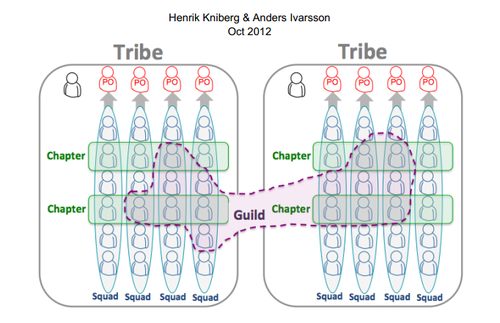A squad is a cross-functionnal self-organizing team (less than 8 people). It is a small business cluster running like a startup in its own right.
The team has end-to-end responsability for the stuff they build (design, deployment, operation). Ideally, each squad is fully autonomous. There should be no blocking dependencies to other squads. So It has all the skills/tools to design, develop, test and release to production.
It works on a long-term mission and focuses on a specific function, iterates on minimum viable product, releasing updates early and often.
This squad has their own workspaces and management structure, a product owner, who prioritise work and leads on making connections with other squads.
Squads are grouped together into related product areas called 'Tribes'. These behave as “incubators” for the startup-like squads. Tribes hold gatherings to share what they're working on and what others can learn. Tribe attempts to remain autonomous. Grouping tribes together for specific projects is called "creating scrums".
For further working together and communication, there are larger groupings, called chapters and guilds. Chapters' and 'Guilds' link Squads horizontally together.
A Chapter is a group of people with similar specific skill (ex: UX, strategy,...) and meet regularly to share knowledge, learnings and discuss their specific challenges.
A Guild is an organic "community" of interest that can stretch across the whole company (rather than just across a Tribe like Chapter does). They share knowledge, tools and practices (ex: Project Management, video production, ...).

The squad team model is a matrix model focus on delivery and sharing. The vertical dimension is defined by squad teams. The horizontal dimension is about sharing knowledge and tools.